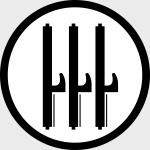Corgi AA32516 Italian Aeronautica Nazionale Repubblicana Junkers Ju-87R-2 "Picchiatello" Stuka Dive-Bomber - Capitano Raul Zucconi, 208a Squadriglia, 101 Gruppo, Sicily, June 1941 (1:72 Scale)
"Neutrals never dominate events. They always sink. Blood alone moves the wheels of history."
- Italian Dictator, Benito Mussolini
 The Junkers Ju 87 or Stuka (from Sturzkampfflugzeug, "dive bomber") was a two-seat (pilot and rear gunner) German ground-attack aircraft. Designed by Hermann Pohlmann, the Stuka first flew in 1935 and made its combat debut in 1936 as part of the Luftwaffe's Condor Legion during the Spanish Civil War.
The Junkers Ju 87 or Stuka (from Sturzkampfflugzeug, "dive bomber") was a two-seat (pilot and rear gunner) German ground-attack aircraft. Designed by Hermann Pohlmann, the Stuka first flew in 1935 and made its combat debut in 1936 as part of the Luftwaffe's Condor Legion during the Spanish Civil War.
The aircraft was easily recognizable by its inverted gull wings, fixed spatted undercarriage and its infamous
Jericho-Trompete ("Jericho Trumpet") wailing siren, becoming the propaganda symbol of German air power and the "Blitzkrieg" victories of 1939–1942. The Stuka's design included several innovative features, including automatic pull-up dive brakes under both wings to ensure that the plane recovered from its attack dive even if the pilot blacked out from the high acceleration. Although sturdy, accurate, and very effective, the Ju 87 was vulnerable to modern fighter aircraft, like many other dive bombers of the war. Its flaws became apparent during the Battle of Britain; poor manoeuvrability, lack of speed and defensive armament meant that the Stuka required a fighter escort to operate effectively.
The Stuka operated with further success after the Battle of Britain, and its potency as a precision ground-attack aircraft became valuable to German forces in the Balkans Campaign, the African and Mediterranean Theaters and the early stages of the Eastern Front campaigns where Allied fighter resistance was disorganized and in short supply. Once the Luftwaffe had lost air superiority on all fronts, the Ju 87 once again became an easy target for enemy fighter aircraft. In spite of this, because there was no better replacement, the type continued to be produced until 1944. By the end of the conflict, the Stuka had been largely replaced by ground-attack versions of the Focke-Wulf Fw 190, but was still in use until the last days of the war. An estimated 6,500 Ju 87s of all versions were built between 1936 and August 1944.
This particular 1:72 scale replica of an Italian Junkers Ju-87R-2 Stuka dive-bomber was piloted by Capitano Raul Zucconi, who was based at Sicily with the 208a Squadriglia, 101 Gruppo during 1941.
Sold Out!
Dimensions:
Wingspan: 7-1/2-inches
Length: 6-1/4-inches
Release Date: May 2010
Historical Account: "Italian Stallions" - In 1940, the Regia Aeronautica of Italy, negotiated the purchase of JU-87 'Stukas' from its Axis ally Germany to replace its own SM85 dive bombers that had been declared unsuitable for combat operations.
During July 1940, 15 Italian pilots arrived for intensive training on the JU-87 at the Luftwaffe 'Stuka' training school in Graz, Austria with a similar number arriving the following month. The first batch of JU-87s supplied were from existing Luftwaffe units so Italian emblems and insignia were painted over the original German markings. To further personalise their aircraft the 'Stuka' was re-named 'Picchiatello' by the Italian crews.
Initially equipping 96 Gruppo based in Sicily, the Regia Aeronautica was the first air arm to use the JU87 in the Mediterranean Theatre. 101 Gruppo was originally based in Tirana, Albania and used their JU-87s during the Balkans campaign before the unit transferred to Sicily. The JU-87R-2 modelled is from 208a Squadriglia, 101 Gruppo as flown by Capitano Raul Zucconi while based at Sicily in June 1941, from where operations were carried out against targets in Malta and on Allied shipping.









